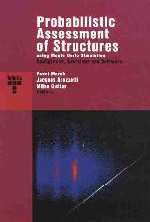 |
Probabilistic Assessment of Structures using Monte Carlo Simulation.
Background, Exercises and Software.
Pavel Marek, Jacques Brozzetti and Milan Guštar, editors.
Publisher: ITAM Academy of Sciences of Czech Republic, Prosecká 76, 190 00 Prague 9, Czech Republic.
© 2001
ISBN 80-86246-08-6.
|
|